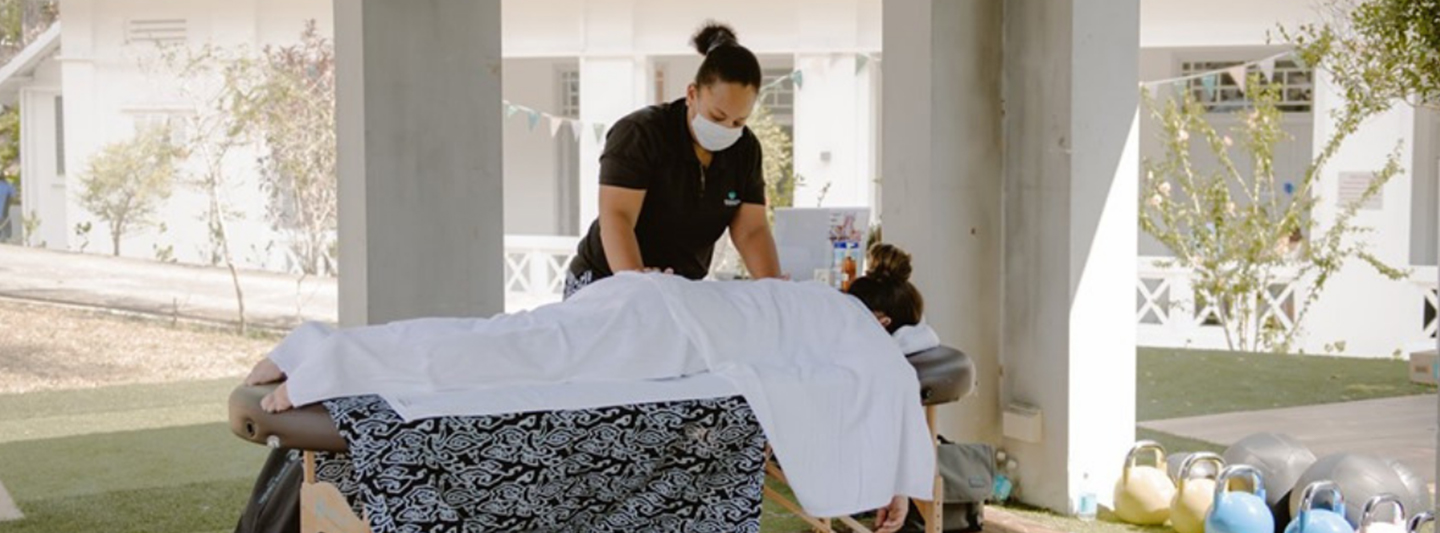
Runner of The Toughest Foot Race on Earth Shares Everything You Need to Know About Training For Your First Marathon
While gyms across the world have shut their doors due to COVID-19, more people are running now than ever before.

Running is a popular form of exercise, however, many runners fall victim to common injuries such as sprained ankles and pulled groins that occur from frequently doing it. Other common injuries and conditions that often inhibit runners from performing at their best include Patellofemoral Pain Syndrome, Achilles Tendinitis, Medial Tibial Stress Syndrome and Iliotibial Band Syndrome.
Injuries such as these have the potential to cause long-term damage to the body, so it’s best to take preventative measures against them. One of the ways to do this is through massage therapy. Besides simply putting you at a relaxed state, massage therapy presents a number of other benefits for runners.
Benefits of massage therapy for runners:
Prevents injuries by relieving muscle tension and stiffness
Expedites the recovery of injuries by stimulating blood flow and circulation
Increases flexibility and range of motion to ultimately enhance running capabilities
Induces relaxation which is a vital necessity for optimising performance
Reduces stress to keep one focused and energetic during training
There are many types of massage therapies, each suitable for different purposes. Here are 5 types of massages that can help runners perform better and prevent injuries, so you’ll know exactly what treatment to ask for the next time you visit a massage therapist!
5 Types of Massages to Help Runners Perform Better
1. Sports Massage
Sports massage involves the manipulation of soft tissues like the skin, muscles, tendons, ligaments and fascia, to repair areas of the body that are overused and stressed from rigorous running. When overexerted, muscle tissues lose its flexibility and remain chronically tight. This increases the chances of injuries. Sports Massage aims to improve muscle flexibility and range of motion to minimise fatigue and soreness after workouts, and ultimately accelerate the body’s return to its optimum state. Regularly getting Sports Massages done can prevent injuries by reducing muscle stiffness and tension.
There are mainly two types of Sports Massage:
Pre-Event Sports Massage includes slow stroking and deep massage techniques to warm up the specific muscles that will be exerted during the workout and stimulating blood flow to these muscles. This energises runners, spurring them to reach their highest potential during races.
Post-Event Sports Massage helps to aid the recovery of the tissues and decrease muscle soreness after a race or training. Compression is used to increase blood flow to these muscles and gentle stretching are included to warm up the muscles.
2. Swedish
Swedish massage utilises long, flowing and relaxing strokes of soft and gentle pressure to release muscle tension and increase blood flow. These strokes do not penetrate deep into the muscles (unlike a sports massage), so while it’s unlikely to reduce muscle adhesions or scar tissues, it still plays a significant role in repairing muscle and aiding relaxation.
To optimise performance during a race, runners should look to relieve muscle tension and lower anxiety and stress prior to a competition. Swedish massages can do just that without causing stress or damage to any tissues, making this type of massage ideal for runners who have an important competition around the corner, and it’s equally as ideal for runners who have just completed a rigorous workout.
3. Trigger Point Therapy
A trigger point is a tight area within muscle tissues that can cause pain in other parts of the body. These pains can be sharp and intense. Trigger Point Therapy is designed to relieve tightness and knots in these painful areas and loosen muscle tissues by applying and releasing deep pressure to the trigger points. Through cycles of pressure and release, runners can identify and alleviate the root of their discomfort.
You can experience a significant decrease in pain after just one treatment of Trigger Point Therapy. Regular sessions can help the body to better manage pain and stress from injuries, specifically for conditions such as calf strains, hamstring injuries and Ilotibial band tightness.
4. Active Release Technique
Active Release Technique (A.R.T.), is a soft tissue therapy that helps relieve tight muscles and nerve trigger points. This technique involves the application of deep pressure and aims to relieve muscle adhesions, break up scar tissues, and reduce muscle pains.
During an A.R.T., the therapist evaluates the texture, tightness and mobility of the body, uses his or her hands to determine the presence of muscle adhesions, and then breaks up these adhesions.
This technique is best for treating specific injuries, especially in situations where the presence of scar tissues may be impairing the body’s natural healing process. A.R.T. is a particularly effective treatment method for hamstring injuries, plantar fasciitis and shin splints.
5. Deep Tissue Massage
Deep Tissue Massage focuses on manipulating deep layers of muscle tissues in the body, targeting the tendons and fascia, which is the protective layer surrounding muscles, bones and joints. As it works the entire muscle while focusing on specific tight spots, Deep Tissue Massage can be used to address many problems such as chronic muscle pain, injury rehabilitation and repetitive strain injury.
This type of treatment is typically a top choice for runners during rigorous training periods, particularly when they are not suffering from a specific type of injury, but instead, seeking relief from painful and tense muscles in the upper back, low back, legs, hips and shoulders.
Core Collective is building centres of excellence where the top fitness and wellness professionals collaborate to deliver the best service and results for you, all under one roof. Our curated community of partners are united by the shared values that we live each day, which are centred around delivering the best customer experience for you.
To find out more about Core Collective and the services we offer, visit our website by clicking here.